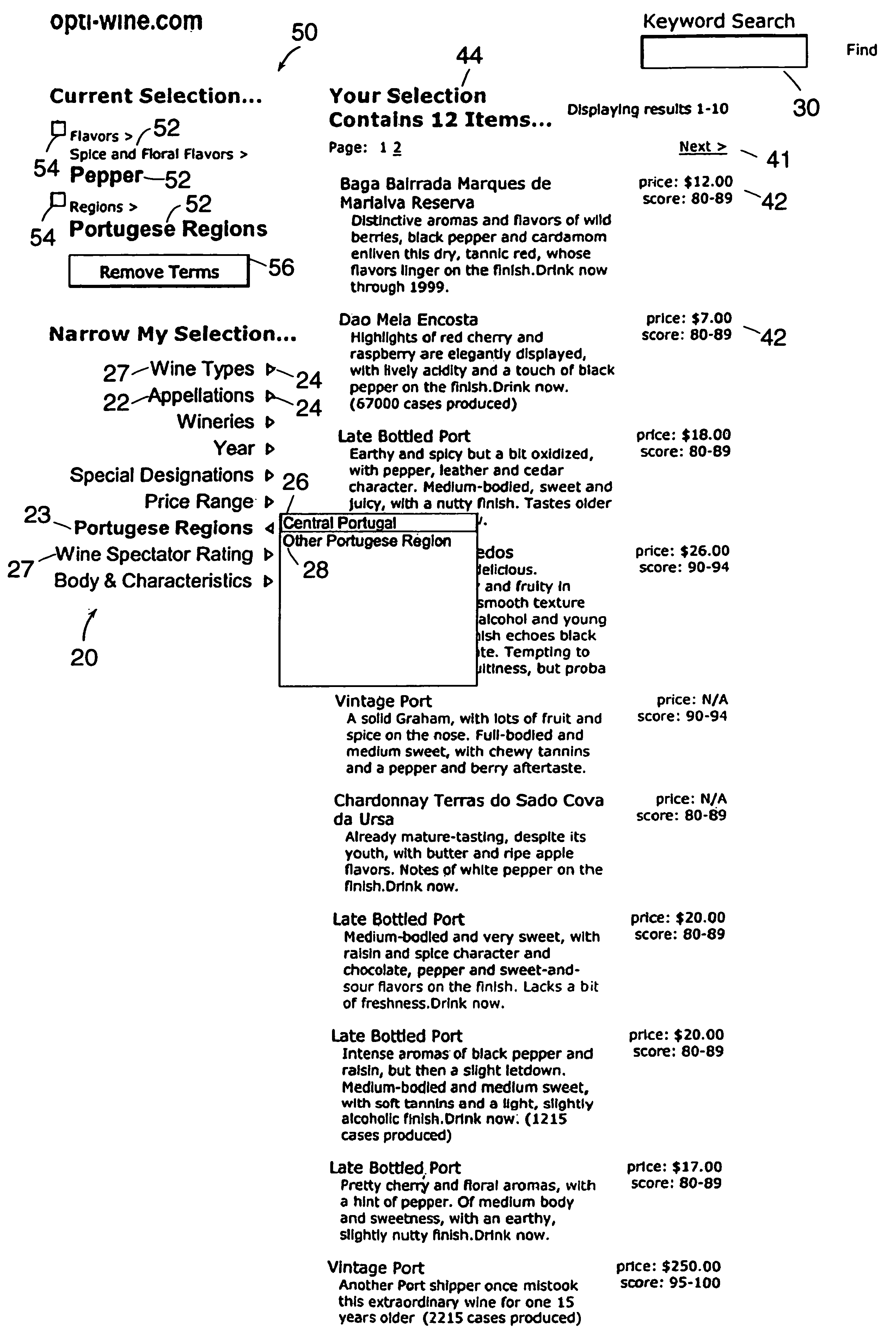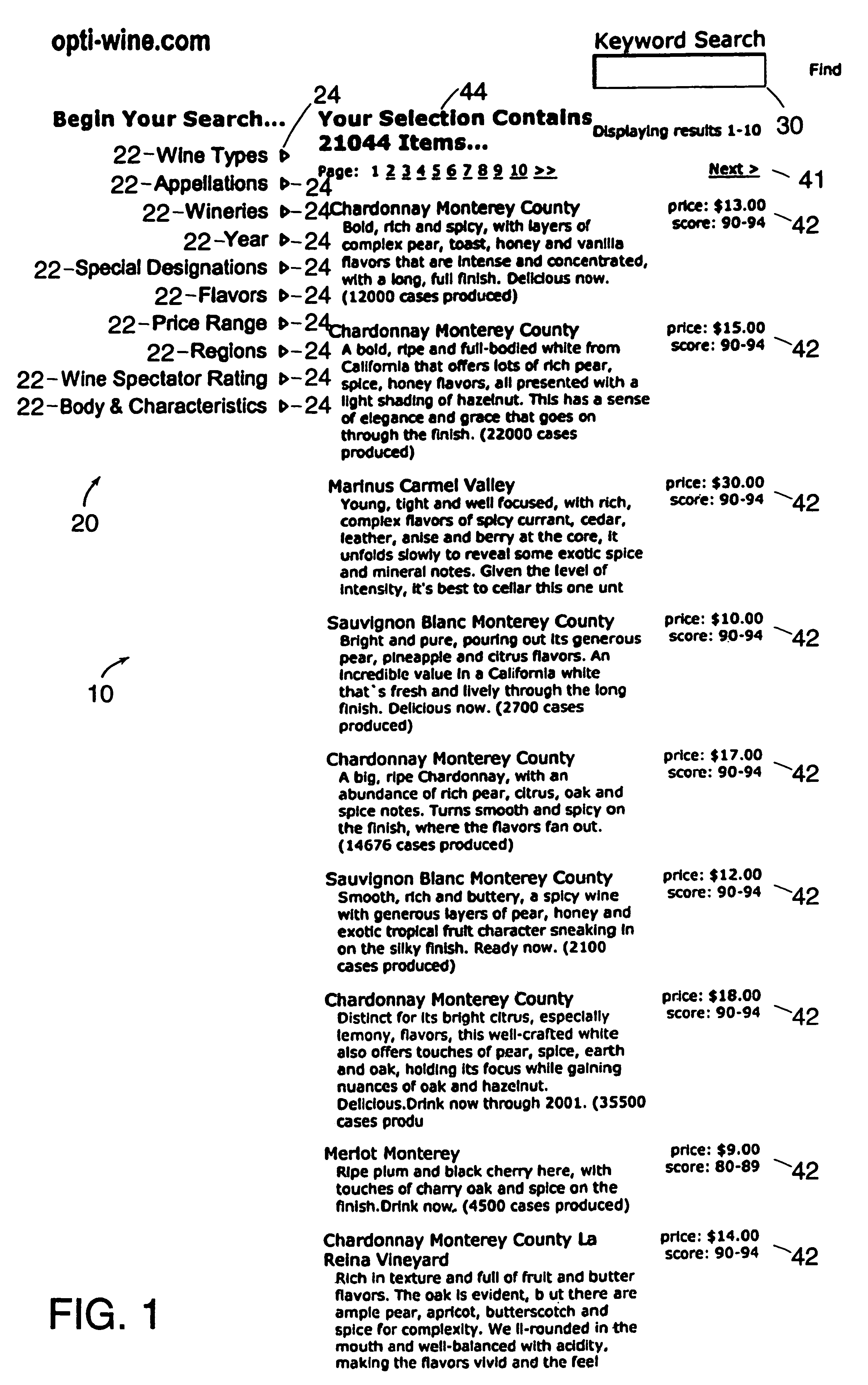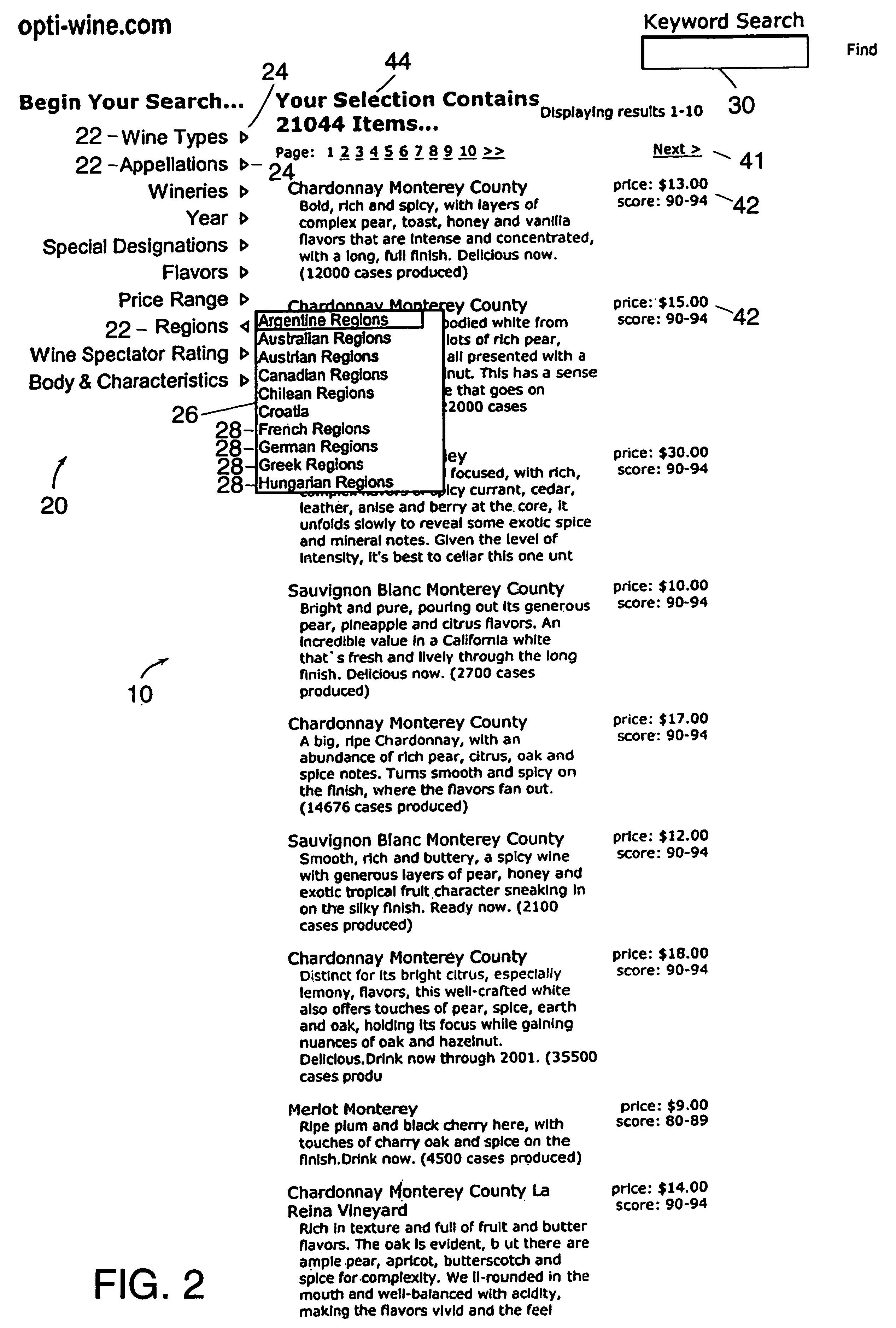Hierarchical data-driven search and navigation system and method for information retrieval
The hierarchical data-driven search and navigation system addresses the limitations of existing systems by allowing users to enter queries as combinations of terms and using Boolean operators, providing a scalable and intuitive interface for effective information retrieval with immediate feedback and relevant results.
- Summary
- Abstract
- Description
- Claims
- Application Information
AI Technical Summary
Benefits of technology
Problems solved by technology
Method used
Image
Examples
Embodiment Construction
[0052]User Interface
[0053]In accordance with one embodiment of the present invention, FIG. 1 shows a user interface 10 to a hierarchical, data-driven search and navigation system. The search and navigation system operates on a collection of documents defined in a knowledge base. As is shown, the user is preferably presented with at least two alternative methods of using the search and navigation system: (1) by selecting terms to navigate through the collection of documents, or (2) by entering a desired query in a search box.
[0054]The search and navigation system preferably organizes documents by domain. In accordance with one embodiment of the present invention, the user interface 10 shown in FIGS. 1-9 is operating on a set of documents that are part of a wine domain. Preferably, a domain defines a portion of the collection of documents that reflects a natural grouping. Generally, the set of attributes used to classify documents in a domain will be a manageable subset of the attribu...
PUM
 Login to View More
Login to View More Abstract
Description
Claims
Application Information
 Login to View More
Login to View More - R&D
- Intellectual Property
- Life Sciences
- Materials
- Tech Scout
- Unparalleled Data Quality
- Higher Quality Content
- 60% Fewer Hallucinations
Browse by: Latest US Patents, China's latest patents, Technical Efficacy Thesaurus, Application Domain, Technology Topic, Popular Technical Reports.
© 2025 PatSnap. All rights reserved.Legal|Privacy policy|Modern Slavery Act Transparency Statement|Sitemap|About US| Contact US: help@patsnap.com



